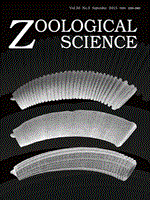Fruits are highly important food resources for mammals in Mediterranean Europe, and due to the dominance of oaks (Quercus sp.), acorns are among those used by a vast array of species, including rodents. The metabolic yield of acorn intake may determine a selection pattern: preference for fat, carbohydrate, and consequently energy-rich fruits; or avoidance of fruits containing high concentrations of secondary chemical compounds (e.g., tannic acid). We studied the acorn feeding selection pattern of wood mice (Apodemus sylvaticus) inhabiting a mixed oak woodland, southwest Portugal, using an experiment conducted in an open-air enclosure. We tested which variables associated with the wood mouse (e.g., sex) and acorns (e.g., size and nutrient content) from three oak species (holm Q. rotundifolia, Portuguese Q. faginea and cork Q. suber oak) could be constraining acorn consumption. Our results indicate that wood mice are selecting acorns of the most common oak species (Q. suber), probably due to their previous familiarization with the fruit due to its dominance in the ecosystem but probably also because its chemical characteristics (sugar contents). Rodent gender and acorn morphology (width) are also influential, with females more prone to consume acorns with smaller width, probably due to handling limitation. This selective behaviour may have consequences for dispersion and natural regeneration of the different oak species.
How to translate text using browser tools
1 September 2013
Acorn Selection by the Wood Mouse Apodemus sylvaticus: A Semi-Controlled Experiment in a Mediterranean Environment
Luís Miguel Rosalino,
Filomena Nóbrega,
Margarida Santos-Reis,
Generosa Teixeira,
Rui Rebelo
ACCESS THE FULL ARTICLE

Zoological Science
Vol. 30 • No. 9
September 2013
Vol. 30 • No. 9
September 2013
oak trees
Q. rotundifolia
Q. suber
Quercus faginea
rodents
seed consumption
seed dispersal




